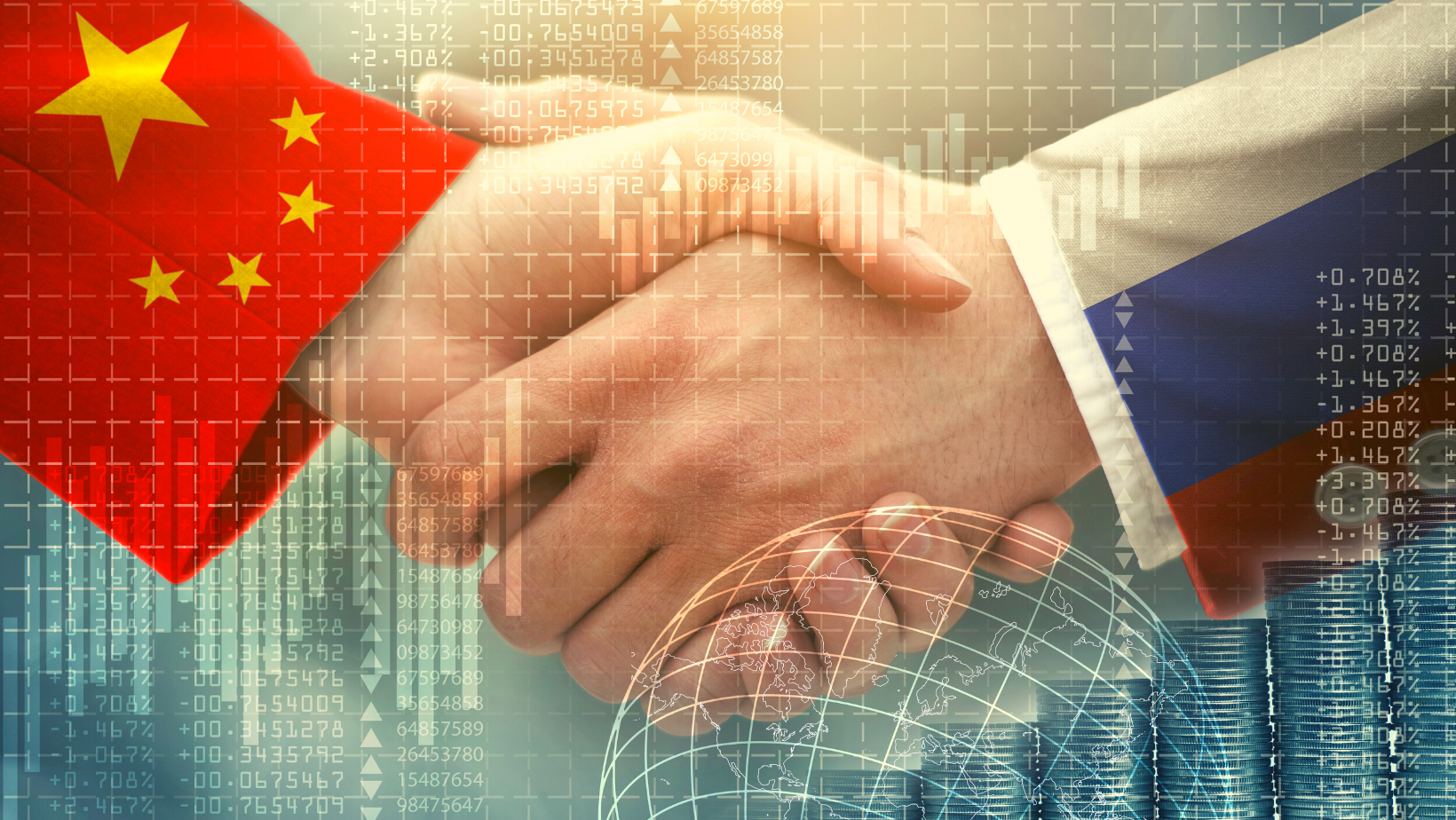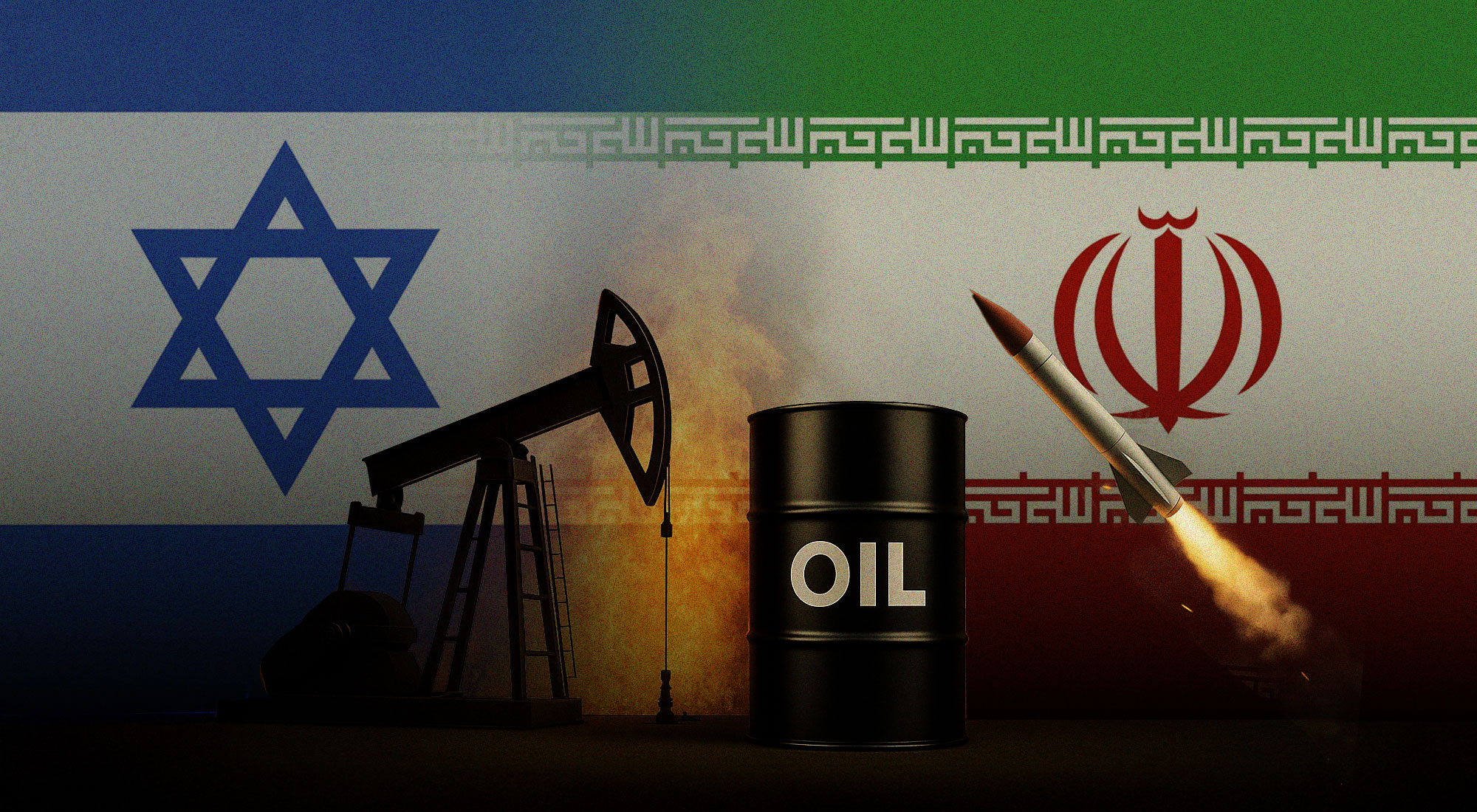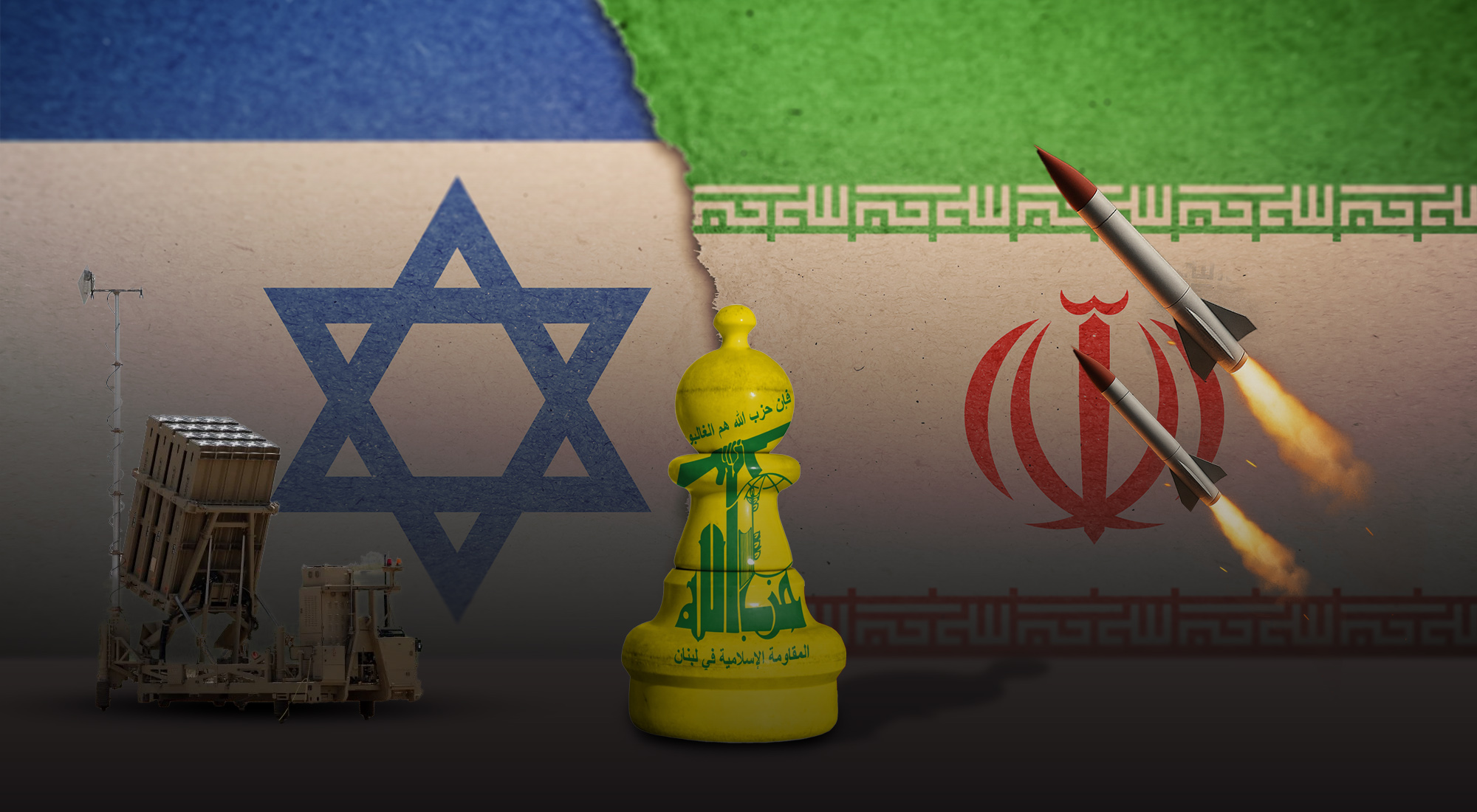During a high-profile meeting on the sidelines of the Winter Olympics in Beijing this year, Chinese President Xi Jinping and his Russian counterpart Vladimir Putin issued a rare yet consequential joint statement, which called for nothing less than a new global order.[1] The two Eastern superpowers made it clear that their cooperation had “no limits” and that there were “no forbidden areas” as far as the future of their strategic partnership was concerned.
“Russia and China stand against attempts by external forces to undermine security and stability in their common adjacent regions, intend to counter interference by outside forces in the internal affairs of sovereign countries under any pretext, oppose color revolutions, and will increase cooperation in the aforementioned areas,” the two world leaders declared. Underscoring their nations’ status as “world powers and permanent members of the United Nations Security Council,” the Russian and Chinese presidents expressed their commitment to create “an even more prospering, stable, and just world” and “jointly build international relations of a new type.”[2]
The two superpowers, therefore, effectively declared a united front in an era of – to use the Pentagon’s lexicon – “great power competition.”[3] Less than a month later, the joint statement, underscoring an unprecedented era of strategic partnership between Beijing and Moscow, was put to the test as Russia faced a new barrage of Western sanctions following its military operation in neighboring Ukraine. With the Eurasian power swiftly emerging as the world’s most sanctioned nation, with even its top leadership and Central Bank landing in the West’s widening sanctions list, Moscow’s burgeoning alliance with Beijing came into sharp relief. [4]
With more than half of Russia’s foreign financial assets frozen in the West, the country’s Finance Minister Anton Siluanov has publicly expressed his country’s hope that “our partnership with China will still allow us to maintain the cooperation…where Western markets are closing.”[5] Earlier, no less than top Kremlin adviser, Sergey Karaganov, openly admitted how Russia sees “China [as] our strategic cushion,” since “we know that in any difficult situation, we can lean on it for military, political and economic support.”[6] Instead of providing categorical support, and directly aiding Russia’s military efforts on the European front, China has tried to walk a fine line by projecting a distinct form of ‘neutrality’ on the brewing conflict.
In order to understand the nature – and likely trajectory – of Sino-Russian relations, one must look at the convergence of four key factors over the past decade, namely: (i) adept resolution of centuries-old territorial disputes along Russia’s Far Eastern borders; (ii) economic complementarity between resource-rich Russia and rapidly industrializing China; (iii) similarity of political systems and personalistic regimes in Beijing and Moscow; and (iv) shared concerns over and grievances against the US-led liberal international order.[7]
A rollercoaster relationship
Throughout much of modern history, beginning with Peter the Great’s eastward expansion in the 17th century, Russia and China, or rather their imperial antecedents, have had contentious relations.[8] The advent of communism in the early 20th century, however, gave rise to a brief, yet world-historical, symbiosis between Moscow and Beijing.[9]
Following the end of World War II, and a few years after the communist victory in China’s Civil War, the Stalinist regime in Moscow became the leading source of strategic patronage, ideological emulation, foreign aid and technological support to Mao Zedong’s nascent regime in Beijing. From the Korean War to the initial phase of the Vietnam War, the two superpowers jointly aided allies across East and Southeast Asia against Western forces.[10]
Soon after Josef Stalin’s demise, however, the two eastern powers regressed into a new era of ideological and strategic competition, culminating in violent border clashes as well as proxy wars across the Indo-China as well as Sub-Saharan Africa, Latin America and the broader post-colonial world. The upshot of the so-called “Sino-Soviet” split was Mao’s game-changer détente with America, which helped isolate Moscow and eventually upend the global strategic landscape in the twilight decades of the 20th century.[11]
The collapse of the Soviet Union precipitated Moscow’s strategic retreat from much of Asia, especially as domestic economic crises, contentious relations with an expanding NATO, and liminal strategic obsession vis-à-vis Europe effectively relegated Asia to the lower rungs of Russia’s strategic priorities. Throughout his first decade in power, Putin largely focused on consolidation of power at home as well as establishing a new equilibrium in Moscow’s relations with the West – culminating in a seemingly cooperative relationship in the realm of counter-terrorism, arms control, nuclear proliferation, and even energy politics.[12]
The Russian leader managed to even build a semblance of rapport with a number of Western counterparts, while Kremlin-backed Russian billionaires became a key source of investment in high-end property markets from London to Miami.[13] But soon, new strategic opportunities in the East beckoned the Russian leader, who began reasserting his country’s place on the global stage. And in China, now a global power in its own right, he found a most willing and capable partner.
Eastern promises
As Putin entered his second decade in power, his strategic orientation underwent a radical transformation. On the one hand, the popular revolts in the Arab world, not to mention massive pro-democracy protests in major Russian cities in the early-2010s, helped crystalize a more ideological outlook in Kremlin.[14] Cognizant of China’s rise as a global economic power, and expanding energy needs across Asia’s booming economies, Putin also began to lay his gaze on new strategic partnerships in the Far East.
To begin with, Russia relished a new era of peaceful relations on its eastern borders, especially with China’s. Throughout the 1990s, as Moscow retreated from the Asian strategic theatre, an increasingly confident Beijing began settling border disputes with a whole host of post-Soviet states, including Russia.[15] A decade later, the two powers began establishing new cooperative mechanisms, most notably the Shanghai Cooperation Organization (SCO), to enhance strategic cooperation across Central Asia and the broader Eurasian landmass.[16]
To close yawning development gaps at home, especially between its prosperous cities in Europe (i.e., Saint Petersburg and Moscow) and the seemingly abandoned Siberian regions, as well as explore new markets in Asia, Putin effectively launched Russia’s own pivot to Asia. First came the lavish 2012 Asia-Pacific Economic Cooperation (APEC) summit in Vladivostok, with an estimated price tag of $21 billion, then Putin’s “march to the east” pronouncements in the St. Petersburg International Economic Forum a year after.[17]
Russia effectively announced its strategic return to Asia by finalizing a $400 billion “deal of the century” energy deal with China.[18] While exploring big-ticket energy deals with neighboring Japan and South Korea, Asia’s two other economic dynamos, Russia also began expanding its defense relations and strategic investments across Southeast Asia. Between 2010 and 2015, Moscow’s arms sales to Southeast Asian countries more than doubled, solidifying Russia as the largest supplier of armaments to the region.[19]
Crucially, Russian energy giants also began investing in offshore projects, including the South China Sea as well as the so-called North Natuna Sea, which lies within Indonesia’s Exclusive Economic Zone.[20] Eager to flaunt its Pacific Fleet, Russia has been negotiating basing access to Vietnam’s Cam Ranh Bay, a prized port which hosts Russian-built submarines and regularly hosts Russian naval assets. Meanwhile, Russia has expanded its joint naval exercises with China and stepped-up energy and defense cooperation with the Asian powerhouse amid a new ‘golden age’ in bilateral relations.[21]
Moment of truth
Aside from economic complementarity and serene borders, what cemented a highly promising era of Sino-Russian relationship is the combination of shared geopolitical concerns over a new Cold War with the West as well as profound ideological affinity between Putin and Xi, who come from the same generation.[22]
On one hand, Russia’s annexation of Crimea in 2014 triggered a new wave of Western sanctions and diplomatic tensions, which only reinforced Kremlin’s pivot to the East. Meanwhile, the Trump administration unilaterally commenced trade wars with China, an opening act in a new era of Sino-American geopolitical competition.[23]
Moreover, Putin and Xi, who are of almost the same age, are like-minded strongmen, who seem committed to reasserting their nations’ historical glories. While the Chinese president is committed to the “Chinese Dream” of “Great Rejuvenation,”[24] namely making Beijing a global force by the middle of the century, his counterpart in Kremlin is intent on reviving Russia’s geopolitical supremacy across Eastern Europe and Central Asia.[25]
The result of this unprecedented Sino-Russian symbiosis was fully on display in the run up to Russia’s military operation in Ukraine this year. Secure in its eastern borders with China, and confident in Xi’s strategic backing, Putin moved thousands of Russian troops from the Far East towards the European front amid an escalating brinkmanship with NATO over Ukraine’s strategic future.
Once Putin embarked on arguably the riskiest geopolitical maneuver of the 21st century, which triggered a swift punitive response from the West, Russia began to lean on China for diplomatic, economic and, reportedly, even military support.[26] Instead of categorically supporting Russia, however, China presented itself as a potential interlocutor and a global force for stability.
While chiding the West for not supposedly respecting Russia’s ‘legitimate security interests’, namely by relentless expansion of the North Atlantic Treaty Organization (NATO) into the post-Soviet space, China has also repeatedly made it clear that the territorial integrity of all nations, including Ukraine’s, should be respected and upheld by the international community. The dualistic nature of Beijing’s response was best encapsulated by the Chinese Foreign Ministry’s clarification on how the Sino-Russian relationship “consists of non-alliance, non-confrontation and not targeting any third party,” while also reassuring Moscow that “[t]here is no ceiling for China-Russia cooperation, no ceiling for us to strive for peace, no ceiling for us to safeguard security and no ceiling for us to oppose hegemony.”[27]
Just days into the conflict, Chinese companies reportedly refused to provide Russia with aircraft components, while the China-based Asia Infrastructure Investment Bank (AIIB) suspended loans to both Moscow and Minsk. China’s ambassador to Moscow called on companies at home to fill in the investment vacuum left by exiting Western companies,[28] but prominent scholars at home began to question the wisdom of continued support for Russia.
Prominent Shanghai-based political scientist Hu Wei, called on China to prioritize “its own best interests” by “unloading the burden of Russia,”[29] while Beijing-based policy advisor Wang Huiyao emphasized how “China’s economic interests with Russia are dwarfed by those it shares with the West.”[30] More recently, a Tsinghua University professor underscored Beijing’s ambivalence by saying he chose to believe that “China will not support Russia in a military way” and that the seemingly “no limit relationship should be read with a grain of salt.”[31]
So far, however, there is little indication that China is intent on abandoning its top strategic partner, especially given their shared geopolitical and ideological outlook. By all indications, Chinese companies will likely try to help Russia to cope with new sanctions by, inter alia, ramping up heavily-discounted energy and raw materials imports from the Eurasian power. China may also try to provide high-tech and financial support amid the new barrage of Western sanctions on Russia. What is clear is that Russia’s relative isolation and economic struggles following its military operation in Ukraine will make China the undisputed senior partner in what was seen until recently as a burgeoning and highly consequential alliance.
References
[1] For a full copy of the joint statement, see: https://cnb.cx/3NTREam.
[2] Ibid.
[3] Uri Friedman, “The New Concept Everyone in Washington Is Talking About,” The Atlantic, August 6, 2019, https://www.theatlantic.com/politics/archive/2019/08/what-genesis-great-power-competition/595405/.
[4] Nick Wadhams, “Russia Is Now the World’s Most-Sanctioned Nation,” Bloomberg, March 8, 2022, https://www.bloomberg.com/news/articles/2022-03-07/russia-surges-past-iran-to-become-world-s-most-sanctioned-nation.
[5] Mark Trevelyan, “Russia Counts on Sanctions Help from China; U.S. Warns off Beijing,” Reuters, March 13, 2022, https://www.reuters.com/markets/europe/russia-says-nearly-half-its-reserves-are-frozen-counts-ties-with-china-2022-03-13/.
[6] Dimitri Simes, “China and Russia’s ‘No Limits’ Ties Test West as Ukraine Shivers,” Nikkei Asia, February 8, 2022, https://asia.nikkei.com/Spotlight/Asia-Insight/China-and-Russia-s-no-limits-ties-test-West-as-Ukraine-shivers.
[7] Cindy Yu, “The Xi-Putin Alliance: How China and Russia Are Getting Ever Closer,” The Spectator, February 7, 2022, https://www.spectator.co.uk/podcast/the-xi-putin-alliance-how-china-and-russia-are-getting-ever-closer; Alexander Gabuev, “A ‘Soft Alliance’? Russia-China Relations After the Ukraine Crisis,” European Council on Foreign Relations, February 10, 2015, https://ecfr.eu/publication/a_soft_alliance_russia_china_relations_after_the_ukraine_crisis331/.
[8] Stephen Kotkin, “Russia’s Perpetual Geopolitics: Putin Returns to the Historical Pattern,” Foreign Affairs 95, no. 3 (2016): 2–9, https://www.jstor.org/stable/43946851.
[9] Stephen Kotkin, “The Unbalanced Triangle: What Chinese-Russian Relations Mean for the United States,” Foreign Affairs, September/October 2009 Issue, https://www.foreignaffairs.com/reviews/review-essay/unbalanced-triangle.
[10] Julia Lovell, Maoism: A Global History )New York: Knopf Doubleday Publishing Group, 2019(; See also Stephen Kotkin, Stalin: Waiting for Hitler, 1929–1941 (London: Penguin, 2018).
[11] Henry Kissinger, On China (London: Penguin Books, 2012); World Order (London: Penguin Books, 2015).
[12] See Stephen Kotkin, “Russia’s Perpetual Geopolitics: Putin Returns to the Historical Pattern,” Foreign Affairs 95, no. 3 (2016): 2–9, https://www.jstor.org/stable/43946851.
[13] See Masha Gessen, The Man Without a Face: The Unlikely Rise of Vladimir Putin, Reprint ed. (New York: Riverhead Books, 2013).
[14] Masha Gessen, “The Putin Paradigm,” The New York Review, December 13, 2016, https://www.nybooks.com/daily/2016/12/13/putin-paradigm-how-trump-will-rule/.
[15] M. Taylor Fravel, Strong Borders, Secure Nation: Cooperation and Conflict in China’s Territorial Disputes (Princeton University Press, 2008), http://www. jstor.org/stable/j.ctt7s2s6.
[16] See Evan S. Medeiros and M. Taylor Fravel, “China’s New Diplomacy,” Foreign Affairs, November/December 2003 Issue, https://www.foreignaffairs.com/articles/asia/2003-11-01/chinas-new-diplomacy.
[17] Bobo Lo and Fiona Hill, “Putin’s Pivot: Why Russia Is Looking East,” Foreign Affairs, July 31, 2013, https://www.brookings.edu/opinions/putins-pivot-why-russia-is-looking-east/.
[18] William Wan and Abigail Hauslohner, “China, Russia Sign $400 Billion Gas Deal,” The Washington Post, May 21, 2014, https://www.washingtonpost.com/world/europe/china-russia-sign-400-billion-gas-deal/2014/05/21/364e9e74-e0de-11e3-8dcc-d6b7fede081a_story.html.
[19] Ben Otto, “The Russians Are Coming…to Southeast Asia,” The Wall Street Journal, July 6, 2016, https://www.wsj.com/articles/the-russians-are-coming-to-southeast-asia-1467824327.
[20] Brad Lendon and Katie Hunt, “China, Russia Begin Joint Exercises in South China Sea,” CNN, September 13, 2016, https://cnn.it/3Jq6fXD.
[21] Alex Snegov, “Vietnam Open to Russian Return to Cam Ranh Bay,” Russia Beyond, May 18, 2016, https://www.rbth.com/news/2016/05/18/vietnam-open-to-russian-return-to-cam-ranh-bay_594025.
[22] Cindy Yu, “The Xi-Putin Alliance: How China and Russia Are Getting Ever Closer,” The Spectator, February 7, 2022, https://www.spectator.co.uk/podcast/the-xi-putin-alliance-how-china-and-russia-are-getting-ever-closer; Alexander Gabuev, “A ‘Soft Alliance’? Russia-China Relations After the Ukraine Crisis,” European Council on Foreign Relations, February 10, 2015, https://ecfr.eu/publication/a_soft_alliance_russia_china_relations_after_the_ukraine_crisis331/.
[23] Richard Javad Heydarian, The Indo-Pacific: Trump, China and the New Struggle for Global Mastery (Singapore: Palgrave Macmillan, 2020).
[24] Elizabeth C. Economy, “Secretary of State John Kerry on China,” Council on Foreign Relations, February 27, 2013, https://www.cfr.org/blog/secretary-state-john-kerry-china.
[25] See Stephen Kotkin, Review of The Resistible Rise of Vladimir Putin: Russia’s Nightmare Dressed Like a Daydream, by Fiona Hill, Clifford G. Gaddy, Karen Dawisha, and Ben Judah. Foreign Affairs 94, no. 2 (2015): 140–53. http://www.jstor.org/stable/24483492.; Lev Gudkov and Eva Hartog, “The Evolution of Homo Sovieticus to Putin’s Man,” The Moscow Times, October 13, 2017, https://www.themoscowtimes.com/2017/10/13/the-evolution-of-homo-sovieticus-to-putins-man-a59189.
[26] Stephen Kotkin, “The Unbalanced Triangle: What Chinese-Russian Relations Mean for the United States,” Foreign Affairs, September/October 2009 Issue, https://www.foreignaffairs.com/reviews/review-essay/unbalanced-triangle.
[27] “China’s Foreign Ministry Clarifies Nature of Relationship with Russia,” The Star, March 30, 2022, https://www.thestar.com.my/aseanplus/aseanplus-news/2022/03/30/china039s-foreign-ministry-clarifies-nature-of-relationship-with-russia.
[28] “Beijing Tells Chinese in Russia to Help Fill Economic Void,” Bloomberg, March 22, 2022, https://www.bloomberg.com/news/articles/2022-03-22/beijing-tells-chinese-firms-in-russia-to-help-fill-economic-void.
[29] Mimi Lau, “Ukraine War: China Risks Isolation If It Doesn’t Distance Itself from Russia, Says Shanghai Academic,” South China Morning post, March 14, 2022, https://www.scmp.com/news/china/politics/article/3170421/ukraine-war-china-must-cut-ties-russia-within-weeks-or-become.
[30] Huiyao Wang, “It’s Time to Offer Russia an Offramp. China Can Help With That,” The New York Times, March 13, 2022, https://www.nytimes.com/2022/03/13/opinion/china-russia-ukraine.html.
[31] Eustance Huang, “Take China and Russia’s ‘No Limits’ Relationship with a ‘Grain of Salt’, Says Former PBOC Advisor,” CNBC, March 31, 2022, https://www.cnbc.com/2022/03/31/take-china-russia-no-limit-relationship-with-grain-of-salt-li-daokui.html.








